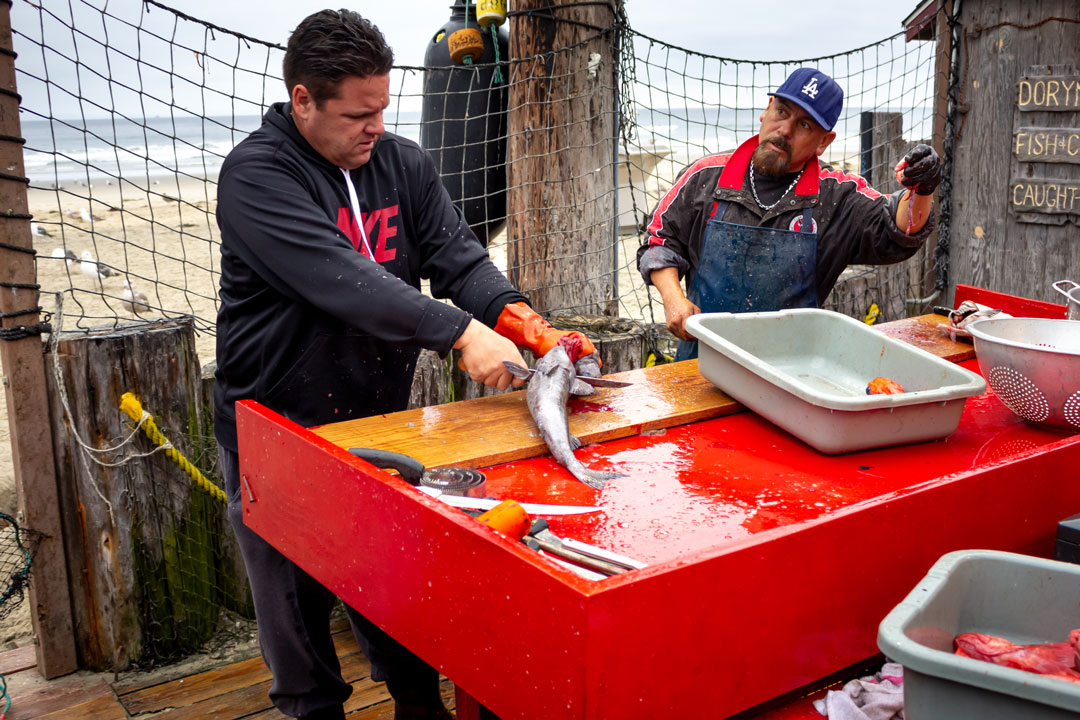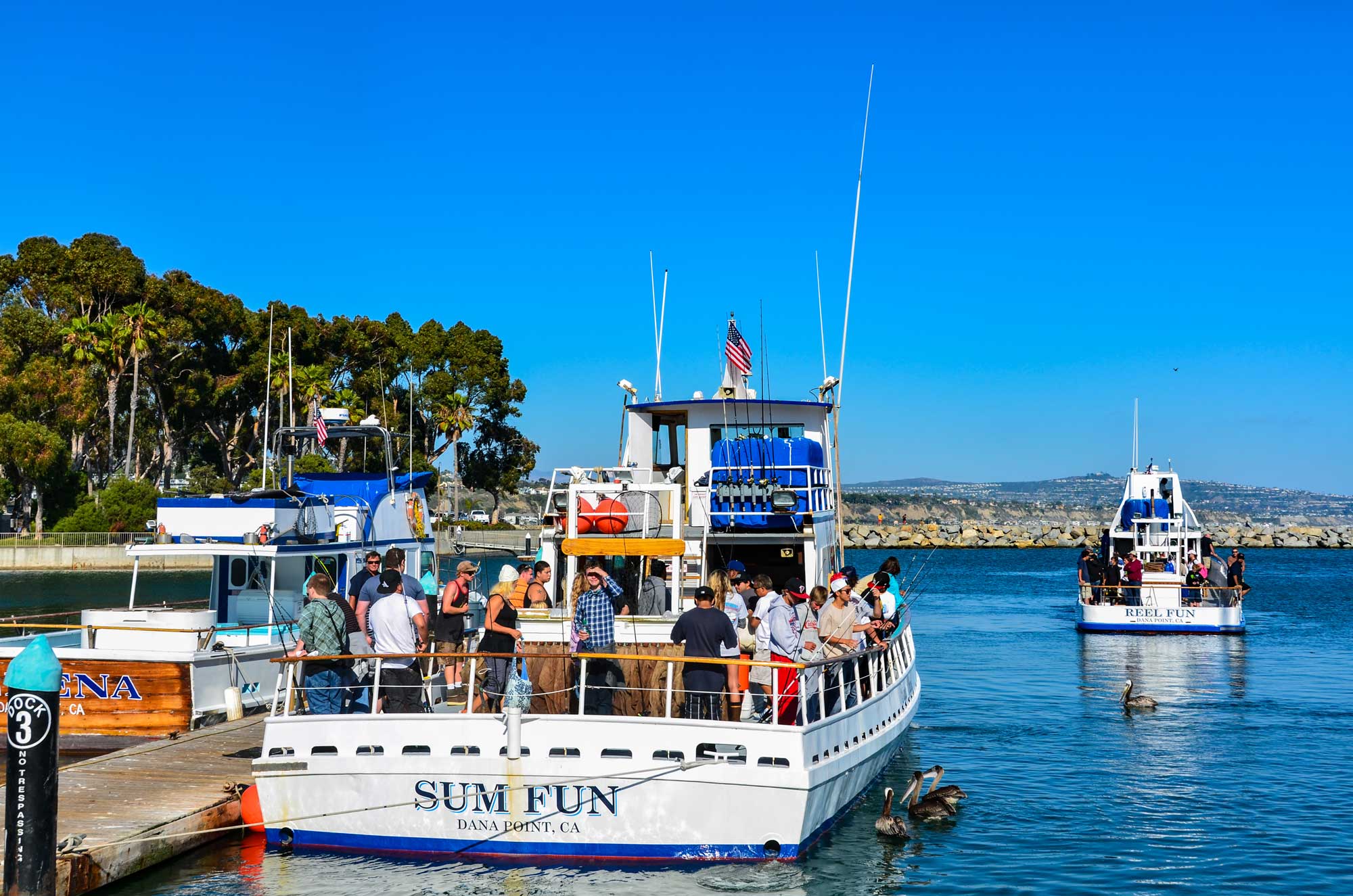While sustainability is its primary goal, the MLMA requires that the fishery management system consider the long-term interests of people dependent on fishing for food, livelihood, or recreation, including non-consumptive uses (§7050(b)(3)(opens in new tab) and §7056(i)(opens in new tab)). The MLMA also requires that adverse impacts of fishery management on small-scale fisheries, coastal communities, and local economies be minimized. It also highlights a number of fishery management issues such as excess effort and conflict related to allocation and access, which pertain directly to human behavior and social context. Therefore, both the risk to the sustainability of the target stock and its ecosystem, and the impacts of management measures on the people, communities, and economies that depend on those stocks must be considered when developing, evaluating, and adapting management.
The MLMA directs the Department to:
- Manage California’s marine sport and commercial fisheries in a way that ensures the long-term economic, recreational, ecological, cultural, and social benefits of those fisheries (§7055(a)(opens in new tab)).
- Work to ensure a sufficient resource to support reasonable recreational use (§7055(c)(opens in new tab)).
- Encourage the growth of commercial fisheries (§7055(d)(opens in new tab)).
- Allocate management benefits and restrictions fairly among recreational and commercial sectors (§7072(c)(opens in new tab)).
- When developing FMPs, describe economic and social factors related to the fishery (§7080(e)(opens in new tab)).
- Minimize the adverse impacts of fishery management on small-scale fisheries, coastal communities, and local economies (§7056(j)(opens in new tab)).
- Observe the long-term interests of people dependent on fishing for food, livelihood, or recreation (§7056(i)(opens in new tab)).
- When developing FMPs, summarize anticipated effects of new management measures on fishery participants and on coastal communities and businesses that rely on the fishery (§7083(b)(opens in new tab)).
The Master Plan separates the MLMA objectives into those that focus on the biological and ecological system and those that focus on the human system. This is due in large part to differences in information needs, data types, sources and analyses, and practicalities related to how these objectives can be effectively considered and addressed. However, the objectives of biological and ecological systems and human systems are linked. For example, management issues such as bycatch and depressed fisheries affect the well-being of people dependent on fishing and have adverse impacts on communities and economies. Solutions to ecological issues can hinge on understanding the source of the problems and identifying practical, feasible options for addressing them. This chapter draws from an overview of socioeconomic considerations under the MLMA developed by the California Sea Grant as part of one of the Information Gathering Projects associated with the Master Plan amendment process.
 Fish market in Newport Beach. (David Tonelson/Shutterstock photo)
Fish market in Newport Beach. (David Tonelson/Shutterstock photo)
Types and uses of socioeconomic information
In fisheries, human systems consist of diverse components, relationships, and dynamics. They include the people, practices, institutions, and facilities involved, and their environmental, regulatory, economic, and social context. Fisheries should be managed with a clear understanding of current socioeconomic conditions and the likely impacts of regulatory changes. This includes: 1) direct impacts to resource users; 2) indirect impacts to resource users, such as changes to local employment or community identity and cohesion; and 3) how fishery participants are likely to adapt their operations and relationships to adjust to change. Basic types of socioeconomic EFI relevant to understanding the human dimensions of fisheries are below and additional details are provided in
Appendix H.
- Demographics: Data relating to a population and groups that comprise it.
- Practices: Where, when, and how fishermen participate in fisheries and fishery-related activities.
- Motivations: Why people do the things they do.
- Institutions: The norms, rules, and strategies that govern peoples’ behavior.
- Relationships: The social and economic connections among people.
- Capital: The natural, human, physical, and financial resources needed and used by participants.
- Employment: Jobs in fishing, seafood production, and supporting infrastructure.
- Expenditures: Amounts paid by participants for goods and services to participate in the fishery.
- Revenue: Payments received for fish landed, handled, processed, and sold.
 Fisherman's Wharf, San Francisco. (ChameleonsEye/Shutterstock photo)
Fisherman's Wharf, San Francisco. (ChameleonsEye/Shutterstock photo)
Integrating socioeconomic information
The various types of socioeconomic EFI described above should be considered together where possible to provide a more complete and meaningful understanding of the human dimensions of fisheries. For example, combining data on demographics, practices, and use patterns can help to evaluate the impacts of management changes on fishery participants, including how impacts are distributed among various groups. Socioeconomic information must also be considered with environmental factors. Environmental factors such as changing ocean conditions, resource abundance, and resource distribution can affect access to fishery resources. These factors can also affect the distribution of fishery activity and associated social and economic impacts to fishery participants and communities (see Chapter 11). Information about how fishery participants are affected by and respond to environmental factors is useful for interpreting fishery trends, designing management, and distinguishing natural and anthropogenic sources of change.
Collecting socioeconomic information
Much of the information on human dimensions described in Appendix H has not been collected, synthesized, or analyzed for many of California’s fisheries and communities. In some cases, this information is collected by the Department through ongoing programs or one-time, targeted efforts. It is also collected by other state and federal agencies and non-agency researchers and can be accessed and analyzed to meet management needs. In other cases, the information may not be readily available, requiring new data collection and analyses. Given the breadth and scope of potential data collection efforts, it is important to identify the information that is most essential to informing management decisions and develop strategies and partnerships for collecting it. Determining an appropriate and realistic approach to data collection will depend on the available resources and capacity.
Using socioeconomic information
ESRs should summarize available socioeconomic information, additional information that is required, and the efforts underway and/or needed to collect it. Rulemakings and FMPs should expand on this by using available information to describe the anticipated impacts of management on participants (§7083(b)(opens in new tab)). The information described above will help to answer case-specific questions (see Appendix O) regarding those impacts and other considerations related to the management of a particular fishery. The information needed to fully address these questions may not always be available. However, whether preparing ESRs, FMPs, or rulemaking packages, these questions provide a means of systematically considering impacts across a range of potential management actions and of identifying important data gaps.
 Passengers boarding a recreational fishing vessel at Dana Point Harbor. (Sandra Foyt/Shutterstock photo)
Passengers boarding a recreational fishing vessel at Dana Point Harbor. (Sandra Foyt/Shutterstock photo)
Photo at top of page: Monterey Bay. (© David Hills, all rights reserved)